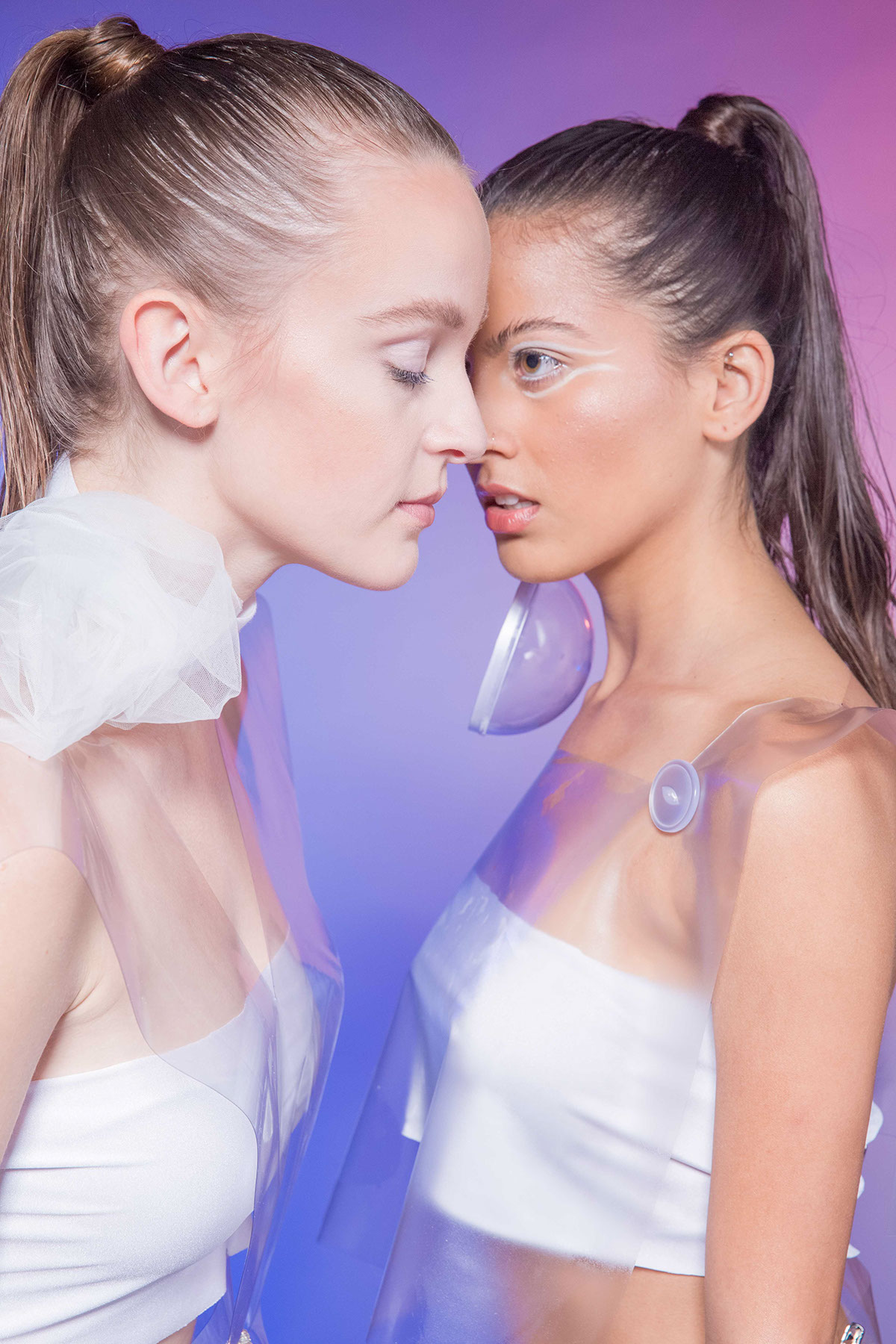
Project: Olfactory Grammar
Creative Fields: Interaction Design, Photography, Art Direction
A speculative dystopia and the alternate reality
Olfactory Grammar reinterprets user interactions based on scent, by considering smell as a powerful pathway and new interface for communication. It’s positioned as resistance to pervasive surveillance, data leakage, and memory degradation. By exploiting strong associations between smell and memory, the Olfactory Grammar wearables are encoded with encrypted messages based on sequence and olfactory training. The project was derived from the interests towards cognitive science, synesthesia, and the way how smell triggers memories and emotions. As olfaction connects to the limbic system of the brain, the unconscious impact of how smell influences us is really powerful. With my passion in visual design, I’m not only interested in visual information processing, more than that, I’d like to investigate how other senses assist or trigger our visual perception. It could be used for designing for visual-impaired people. Starting the project from exploring topics in different research areas, to writing a science fiction that explores technophobia, I proposed possible ways that we could fully utilize the sense of smell in a future world, with new behavioral patterns and social dynamics.






Olfactory Grammar Wearable
In the context of pervasive surveillance, memory degradation, and data leakage. I am proposing the idea of developing an encrypted message system with smell. When everything is monitored, how about we develop a new communication method which is Invisible?
Why Develop Encrypted Smell Message System?
Besides the invisibility, our olfaction is closely linked to parts of the brain that process memory. We can easily recall a piece of memory within one second when we get a whiff of something. In fact, Increasing amount of research has revealed the possibility of using olfactory stimulation for Alzheimer's and Dementia, even for amplifying learning and memory capabilities. By using these strong associations between smell and memory, we could possibly encode and decode our messages with smell.
Body Mapping
Other than the scent message itself, different ways of using the Olfactory Grammar wearable can indivate various meanings, such as superiority, level of trust, relationships, and how much information allwed to be revealed or passed on to others.



Strategy Development & Design Process
Research - Creative thinking - Hypothesis - Reading (Thesis and articles) - Low Fidelity Prototyping - Experiments - Workshop - Writing (Critical Fiction, which opened up my imagination and a free flow of thinking, and turned out to be an important catalyst for the project) - Visual Exploration - Product Design - High Fidelity Prototyping - Photography - Visual Design











Special Thanks
In Alphabetical Order
Amanda Jensen [ Model ]Anjuli Sethi [ Model ]
Christine Meinders [ Experiment Participant ]
Hyejin Lim [ Model ]
Jessie Mar [ Photographer ]
Jade Milan [ Experiment Participant ]
Josh Bookman [ Summery Text Correction ]
Kiana Bahramian [ Experiment Participant ]
Olivia Yang [ Experiment Participant ]
Schei Wang [ Experiment Participant ]
//
Advisors
Elise Co [ Lead Advisor ]
Claire L. Evans [ Adjunct Advisor ]
Mike Milley [ Adjunct Advisor ]
//
Department & & School
References
In Alphabetical Order
Peter de Cupere: Olfactory Art
Selwa Sweidan & Jay Hong: Radical Sensing
Sissel Tolaas: An alphabet for the nose


Thanks for watching






